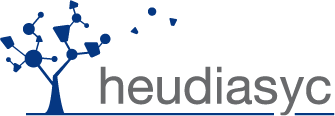en:research
Differences
This shows you the differences between two versions of the page.
| Both sides previous revisionPrevious revisionNext revision | Previous revisionLast revisionBoth sides next revision | ||
| en:research [2012/10/26 11:30] – sdesterc | en:research [2015/05/22 09:37] – sdesterc | ||
|---|---|---|---|
| Line 5: | Line 5: | ||
| ====== Practical uncertainty representations ====== | ====== Practical uncertainty representations ====== | ||
| - | Work (mainly) benefiting from collaborations with D. Dubois, M. Troffaes, E. Miranda, L. Utkin, E. Chojancki and E. Quaeghebeur | + | Work (mainly) benefiting from collaborations |
| There exist many practical representations in imprecise probability theories, including possibility distributions, | There exist many practical representations in imprecise probability theories, including possibility distributions, | ||
| Line 11: | Line 11: | ||
| Aside establishing new relations between the properties of several models (i.e. clouds, p-boxes, possibility distributions), | Aside establishing new relations between the properties of several models (i.e. clouds, p-boxes, possibility distributions), | ||
| - | Our current focus is to link this model with other models (such as info-gap theory) that use the idea of nested sets to propose solutions to statistical problems, and to work out what are the practical usefulness and limitations | + | Our latest research on the topic include the specification |
| ====== Information fusion and combination ====== | ====== Information fusion and combination ====== | ||
| - | Work (mainly) benefiting from collaborations with D. Dubois, P. Buche, B. Charnomordic, | + | Work (mainly) benefiting from collaborations |
| Merging information from multiple sources is a recurring problem in modern systems. Common problems encountered by such merging are to cope with dependent and conflicting sources and to take account of sources characteristics (reliability, | Merging information from multiple sources is a recurring problem in modern systems. Common problems encountered by such merging are to cope with dependent and conflicting sources and to take account of sources characteristics (reliability, | ||
| Line 22: | Line 21: | ||
| For practical purposes, we have proposed to use the notion of maximal coherent subsets as a way to deal with conflict among sources, and have applied it to the problem of estimating source reliability form meta-information. | For practical purposes, we have proposed to use the notion of maximal coherent subsets as a way to deal with conflict among sources, and have applied it to the problem of estimating source reliability form meta-information. | ||
| - | Our current focus in this area concerns the characterization of inconsistency and relaibility | + | Our current focus in this area concerns the characterization of inconsistency and reliability |
| + | |||
| ====== Uncertainty propagation and (in)dependence modelling ====== | ====== Uncertainty propagation and (in)dependence modelling ====== | ||
| - | Work (mainly) benefiting from collaborations with D. Dubois, G. De Cooman E. Chojnacki, J. Baccou, T. Burger, M. Sallak | + | Work (mainly) benefiting from collaborations |
| How to propagate uncertainty analysis in various models is an important issue that may face several difficulties. Most of my research in this domain has concerned the propagation of uncertainty model through deterministic functions with methods combining Monte-Carlo simulation and interval analysis, with an industrial risk-assessment purpose. | How to propagate uncertainty analysis in various models is an important issue that may face several difficulties. Most of my research in this domain has concerned the propagation of uncertainty model through deterministic functions with methods combining Monte-Carlo simulation and interval analysis, with an industrial risk-assessment purpose. | ||
| - | Related problems are how to model independence to obtain joint models (and how to compute with such latter models), or how to simulate a given imprecise probabilistic model. | + | Related problems are how to model independence to obtain |
| - | Some of our recent research also deals with the problem of how to efficiently evaluate the reliability when the component | + | Some of our recent research also deals with the problem of how to efficiently evaluate the reliability when the component |
| - | ====== Classification problems ====== | ||
| - | Work (mainly) benefiting from collaborations with B. Quost, T. Denoeux, B. Ben Yaghlane, N. Sutton-Charani, | + | |
| + | ====== Learning problems ====== | ||
| + | |||
| + | Work (mainly) benefiting from collaborations | ||
| Outside of extending some classical classifiers (k-NN methods, Naïve networks) to imprecise probabilistic settings, our work currently focuses on the combination of classifiers, | Outside of extending some classical classifiers (k-NN methods, Naïve networks) to imprecise probabilistic settings, our work currently focuses on the combination of classifiers, | ||
| - | One of our current favorite field of investigation is the so-called binary decomposition, | + | One of our current favorite field of investigation is the so-called binary decomposition, |
| ====== Applications ====== | ====== Applications ====== | ||
| - | Work (mainly) benefiting from collaborations with P. Buche, B. Charnomordic, | + | Work (mainly) benefiting from collaborations |
| We have applied ideas coming from imprecise probability theories and more generally concerning uncertainty handling to a number of frameworks, including: | We have applied ideas coming from imprecise probability theories and more generally concerning uncertainty handling to a number of frameworks, including: | ||
| + | |||
| * Flexible querying in data bases (P. Buche, V. Guillard) | * Flexible querying in data bases (P. Buche, V. Guillard) | ||
| - | * Signal filtering with kernels (O. Strauss) | + | * Signal filtering with kernels (O. Strauss, F. Comby) |
| * Knowledge Engineering (B. Charnomordic, | * Knowledge Engineering (B. Charnomordic, | ||
| - | * Risk analysis and robust design (E. Chojancki, V. Guillard) | + | * Risk analysis and robust design (E. Chojancki, V. Guillard, M. Sallak) |
| + | * Process modelling (C. Baudrit) | ||
| + | * Virtual training (I. Thouvenin) | ||




